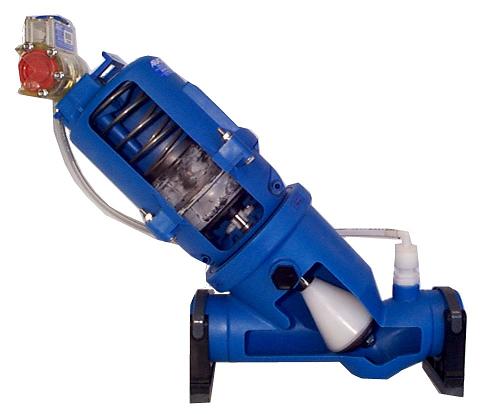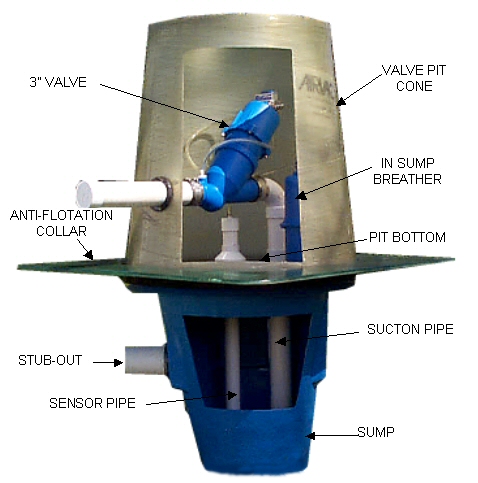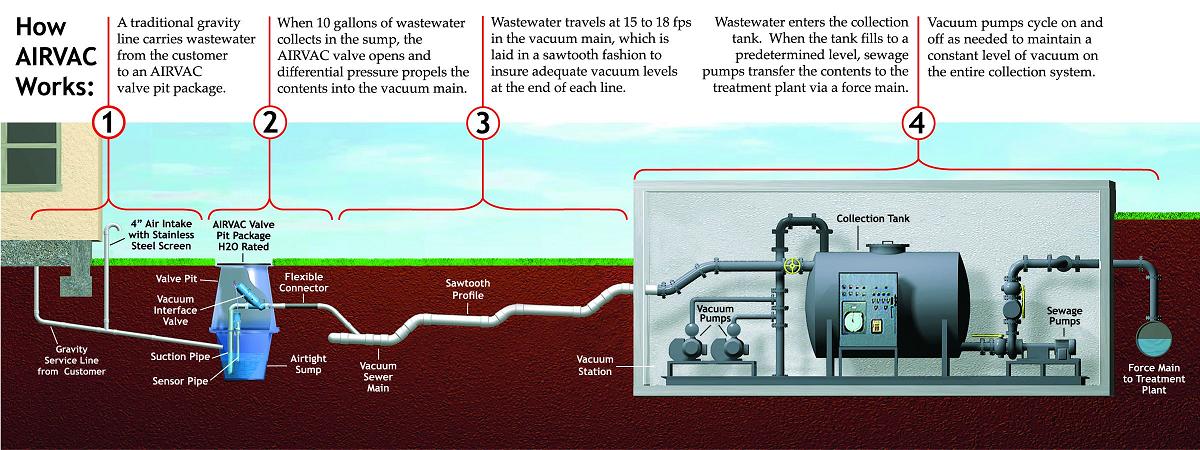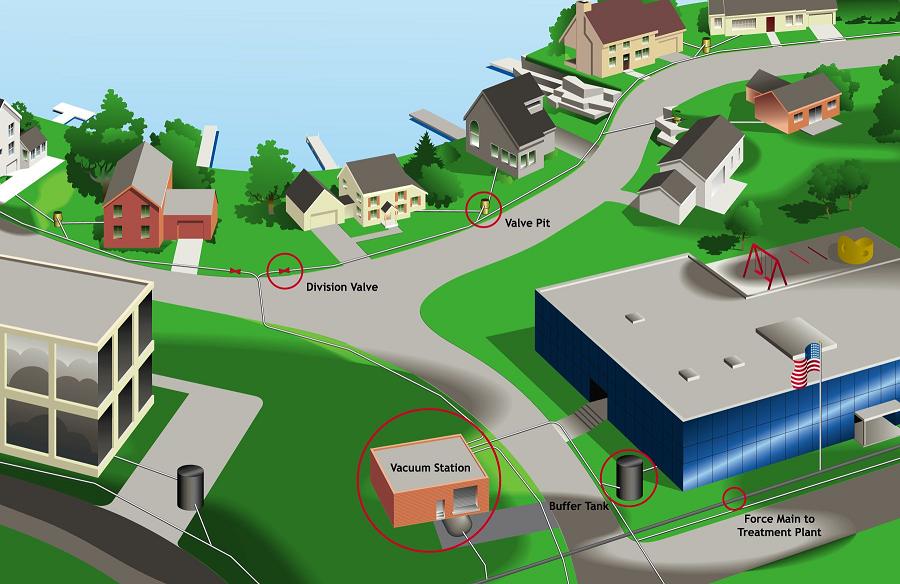VACUUM SEWERS
Vacuum sucks. Literally. OK, I take that back. Vacuum sewers do not suck sewage out as we might think. Actually vacuum sewers operate on a pressure differential within the sewer lines. A higher air pressure on one side of the sewage wants to equalize with the lower, actually negative, air pressure on the other side. And it's in a hurry. It ends up pushing the sewage up, around, over, out of its way. The sewage, even in a vacuum sewer line still flows using gravity. Vacuum sewers are designed to lay the line shallow; between 4 and 6 feet deep, and install what we call lifts. These lifts are rises in the pipe approximately 1 foot high. When the air pressures equalize, it can push or lift the sewage up this lift and then continue to flow again. But how does the sewage from your house get into the vacuum sewer system? A vacuum valve is used for this.
 . .
. .

Illustrations courtesy of Airvac, Inc. www.airvac.com
The vacuum valve is installed in a valvepit outside your home. SCCLSD has almost a thousand vacuum valvepits throughout its coverage area. One vacuum valvepit can collect sewage from one, two or more houses. The vacuum valvepit contains two areas. The upper pit area is where the vacuum valve is located. The lower pit bottom is where your sewage goes. Your sewage leaves your house in the same manner as the gravity method described earlier and flows to the valvepit through your lateral connection at a minimum slope of 2%. When the lower tank gets enough sewage in it, the vacuum valve opens. This lower pit has normal atmospheric pressure in it (that's what we live and breathe every day), and the sewer pipe has negative pressure in it. The higher pressure wants to equalize, so it pushes the sewage up and out of its way. The vacuum valve has a timer on it so the valve only stays open for a few seconds. If it were to stay open longer, the pressures will continue to equalize and would eliminate the negative pressure in the sewer line, not allowing the collection of sewage.
Through a series of pipes and lifts as described above, the sewage flows to a pumping station. There it is pumped to a gravity sewer line to continue its journey to the Treatment Plant.

Illustrations courtesy of Airvac, Inc. www.airvac.com